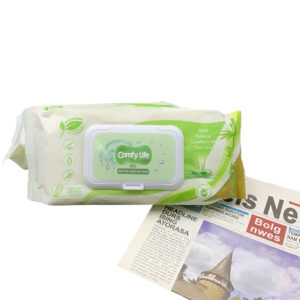What are the benefits of using flushable wet wipes?
Flushable wet wipes are a popular personal hygiene product that offer several benefits over traditional dry toilet paper.
Here are some of the benefits of using flushable wet wipes:
Improved cleanliness: Wet wipes are more effective than dry toilet paper at removing fecal matter and other debris from the skin. This can help improve overall cleanliness and reduce the risk of infection.
Reduced irritation: Wet wipes are gentler on the skin than dry toilet paper, which can cause irritation and discomfort. They are also more effective at removing residual fecal matter, which can contribute to skin irritation and itching.
Enhanced freshness: Wet wipes can help provide a fresh, clean feeling after using the bathroom. This can be particularly beneficial for people with active lifestyles or who are prone to sweating.
Environmentally friendly: Many flushable wet wipes are biodegradable and environmentally friendly, which can reduce your impact on the environment compared to traditional wet wipes or baby wipes.
Convenience: Wet wipes are easy to use and can be carried with you for on-the-go use. They are also a great option for people with mobility issues or disabilities who may have difficulty reaching or using traditional toilet paper.
While there are many benefits to using flushable wet wipes, it’s important to choose wipes that are designed to be flushable and environmentally friendly. Avoid flushing regular baby wipes or other non-flushable wipes, China best wet wipes for adults suppliers as these can contribute to clogs and other plumbing issues.
How can I tell if a wet wipe is flushable?
While many wet wipes are marketed as “flushable,” not all of them actually break down in the same way that toilet paper does.
To determine if a wet wipe is flushable, look for the following characteristics:
Packaging: Flushable wet wipes will often be labeled as such on the packaging. Look for phrases like “flushable,” “septic-safe,” or “disposable in toilets.”
Ingredients: Check the ingredients list for any materials that may not break down easily, such as plastic fibers or synthetic materials. Avoid wipes that contain these materials, as they can contribute to clogs and other plumbing issues.
Certification: Look for certifications from organizations such as the Water Environment Federation (WEF), the International Water Services Flushability Group (IWSFG), or the Municipal Sewer and Water Association (MSWA). These certifications indicate that the wipes have been tested and meet certain standards for flushability.
Disintegration: To test whether a wet wipe is truly flushable, you can conduct a “disintegration test” at home. Place the wet wipe in a jar of water and shake it vigorously for 15 seconds. If the wipe begins to break down or disintegrate, it may be flushable. If it remains intact, it should not be flushed.
It’s important to note that even flushable wet wipes can contribute to plumbing issues and clogs if they are not disposed of properly. Always follow the manufacturer’s instructions for flushing, and avoid flushing multiple wipes at once. When in doubt, throw wipes in the trash instead of flushing them.
